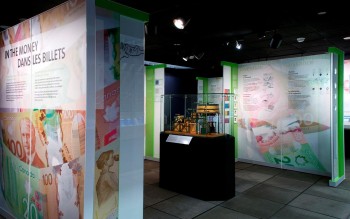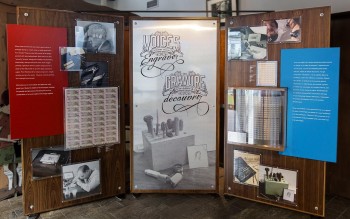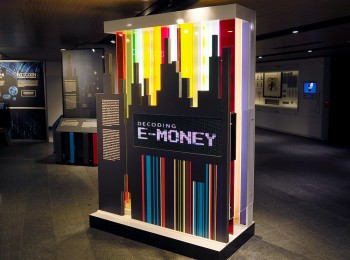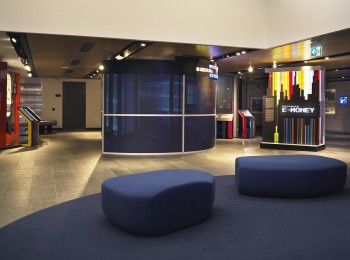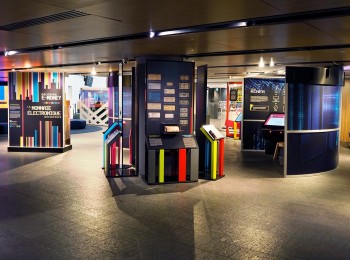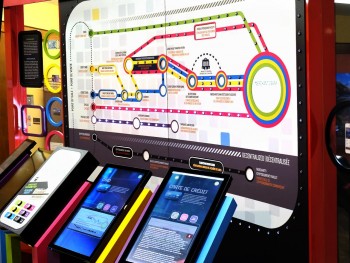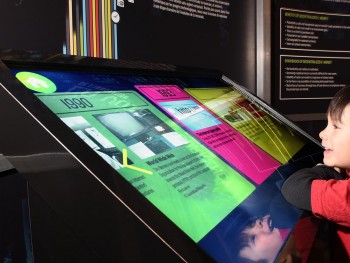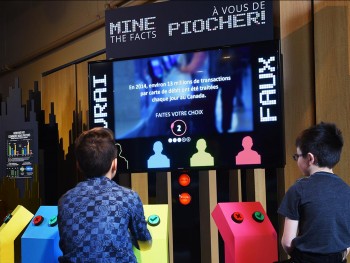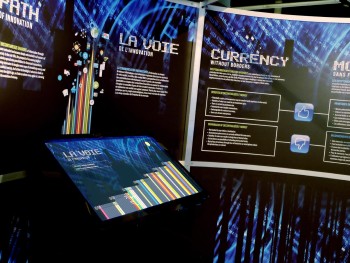The new Museum’s first special exhibition
Unlike renovating a house, when we closed the Museum for its four-year re-invention, we couldn’t just “stay” at another museum until the water got turned back on. Or could we have? In fact, once the renovation was under way, that’s essentially what we did. Though we didn’t sleep on anybody’s couch, we did create a travelling exhibitions program to keep the virtual doors open while the actual doors were closed. We stayed at museums from Kitimat, B.C., to Gimli, MB, and from Timmins, ON, to Chicoutimi, QC, and we still have a few bookings available for 2019. Now that we are again back in our own house, we’ve invited one of our wandering exhibitions home for a visit: Decoding E-Money.
As the title suggests, this exhibition aims to remove the confusion about what exactly e‑money is. It’s important to make the distinction between what people think of as e‑money and what, in fact, it is. In a backgrounder on its website, the Bank of Canada defines e‑money as
…monetary value that is stored and transferred electronically through a variety of means—a mobile phone, tablet, contactless card (or smart card), computer hard drive or servers.
Despite their fully electronic environments, debit cards, e‑mail transfers and credit cards are not examples of e‑money. They are methods of payment that follow electronic pathways along which transaction information travels. It might be more helpful to imagine e-money as money that has been withdrawn from a bank account and stuffed into an envelope waiting to be spent. The “envelope” just happens to be an electronic device.
The version of e‑money we are most concerned with in this exhibition is cryptocurrency and, specifically, the ever-newsworthy Bitcoin. You can purchase it using your national currency, and it can be sold for currency, but in between it acts all by itself as a token of exchange that exists entirely online. Bitcoin doesn’t actually meet the criteria for a currency, but its underpinning technology, called the blockchain, is ground-breaking—a system that allows for secure transactions without third-party oversight. We studied it for you so that you can explore it too.
Like its mother museum, Decoding E‑money has a great number of interactive features. It is, fittingly, a very digital exhibition, with games, a timeline, videos and interpretive content all accessed using touch panels and computer consoles. The only significant part of the display that is not digital is the artifact zone, a breath of old-fashioned air in a very modern exhibition. Here, you will see money that was, in its day, as difficult for some to accept as digital currencies are today. To help visitors explore in-depth information about these artifacts, we provide you with a book, an appropriately low-tech medium.
So please drop by the Museum and check out Decoding E money. It will be in our special exhibitions space until May 6, 2018.
The Museum Blog
How Does $ = Dollar?
By: Graham Iddon
The Vertical Note That Almost Was
By: Graham Iddon
The Coming of the Toonie
The Canadian Roots of the “Greenback”
By: Graham Iddon
What’s Up Next for 2019?
By: Graham Iddon
Boer War Siege Money
By: Graham Iddon
Money’s Magnificent Moustaches
By: Graham Iddon
